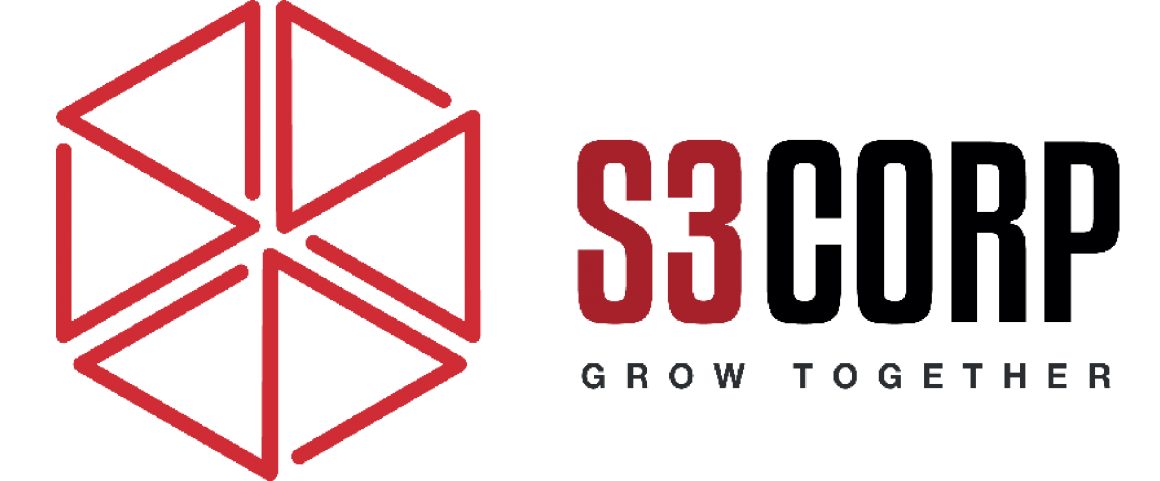Key Tools, Frameworks, and Libraries for Software Development in 2025
— July 25, 2019
The rapid growth of software development has introduced numerous tools, frameworks, and libraries. These advancements are streamlining the coding process and accelerating the journey from prototype to production.
Generally, by 2025, software development will be shaped by tools and frameworks that emphasize flexibility, efficiency, and scalability. Developers across industries will rely on a core set of technologies that simplify complex processes and enhance performance. This article explores the leading tools, frameworks, and libraries poised to define the landscape, providing a detailed perspective on their utility, capabilities, and emerging trends.
React.js
React.js will remain a dominant force in creating interactive and responsive user interfaces. Its virtual DOM facilitates high performance by updating only the necessary elements on a webpage, making it suitable for applications requiring dynamic content rendering. The component-based architecture allows developers to reuse code efficiently, speeding up development cycles. React’s strong community support and ecosystem, including tools like Redux and React Router, ensure its relevance in solving modern frontend challenges.
Angular
Angular stands out as a comprehensive solution for building large-scale single-page applications. It offers built-in features like two-way data binding, dependency injection, and a powerful CLI, which streamlines the development process. Its TypeScript-based architecture adds reliability by catching errors during compile time. Enterprises favor Angular for its ability to handle complex projects, thanks to its modularity and extensive support for testing and debugging.
AngularJS
AngularJS, introduced by Google in 2012, is a structural framework designed for creating dynamic web applications. Its ability to build single-page applications (SPAs) efficiently has made it a popular choice among developers. AngularJS uses HTML extended with directives, allowing developers to enhance web pages with additional functionality.
This framework follows the Model-View-Controller (MVC) paradigm, employing two-way data binding to synchronize model and view updates instantly. This automation ensures that application components remain updated at all times. AngularJS also supports creating reusable components, separating application logic from appearance, and simplifying development and testing. Its built-in features like client-side validation, DOM manipulation, and deep linking further enhance its utility for modern web development.
Tailwind CSS
Tailwind CSS is increasingly favored by developers for its utility-first approach. By offering pre-designed classes, it eliminates the need for custom CSS in most cases, significantly reducing development time. Its responsiveness is highly efficient, as developers can apply specific styles directly within their HTML markup. This approach ensures consistency while providing the flexibility to create complex designs without writing additional CSS from scratch.
Bootstrap
Bootstrap remains a trusted choice for creating responsive, mobile-first web interfaces. Its grid system simplifies layout creation, while pre-designed components like buttons, modals, and carousels speed up development. Bootstrap’s customization options, including the ability to modify themes and variables, ensure developers can align designs with brand requirements. Its compatibility with modern browsers and strong community support solidify its position as a foundational frontend framework.
Bulma
Bulma offers a lightweight alternative to traditional CSS frameworks, appealing to developers who prefer simplicity and modularity. Its reliance on pure CSS eliminates JavaScript dependencies, making it easy to integrate with existing projects. Bulma’s focus on responsiveness ensures a seamless experience across devices, while its clear documentation makes it accessible for developers of all skill levels.
Node.js
Node.js is a JavaScript runtime framework built on Chrome’s V8 engine. Its asynchronous, event-driven, and non-blocking I/O model makes it ideal for real-time, data-intensive applications. Since its launch in 2009, Node.js has become integral to numerous corporate applications, including those by Netflix, LinkedIn, Walmart, and Yahoo.
Node.js benefits from JavaScript’s non-blocking nature, allowing it to handle multiple concurrent events effectively. Applications built with Node.js use less memory, execute operations faster, and excel in scenarios involving heavy I/O workflows, such as single-page applications or streaming platforms. The Node Package Manager (NPM), the world’s largest open-source library ecosystem, simplifies module management, dependency resolution, and utility installation. The extensive NPM ecosystem provides a wide range of libraries, making it possible to build everything from RESTful APIs to real-time chat applications efficiently. Node.js excels in scenarios requiring quick data processing, such as streaming services or online gaming platforms.
By leveraging JavaScript for both frontend and backend development, Node.js enables seamless collaboration and efficient bug resolution across teams.
.NET Core
.NET Core, an open-source framework by Microsoft, is engineered for creating cross-platform applications that run seamlessly on Windows, Linux, and macOS. Its versatility makes it an excellent choice for server-side applications requiring high performance, scalability, and compatibility with Docker containers and microservices architectures.
The framework offers robust support for modern development needs, providing developers with tools to build and maintain scalable systems effectively. Its open-source nature and strong community support contribute to its growing adoption among developers and organizations worldwide.
Spring
Spring is an open-source framework for building Java enterprise applications. It provides a comprehensive infrastructure for developing well-structured and easily testable applications, from web apps to applets. A key feature of Spring is dependency injection (Inversion of Control), which assigns dependencies at runtime, making the codebase modular and easier to maintain.
Spring simplifies repetitive tasks through built-in templates for tools like Hibernate, JPA, JDBC, and JTA, reducing boilerplate code. It also supports various application environments, offering consistent programming models that minimize dependencies on runtime contexts. With its flexibility and adaptability, Spring has become a cornerstone for Java developers.
In Java application development, aside from Spring, Spring Boot will also continue to be integral to enterprise-level solutions and microservices architectures. Spring and Spring Boot are both powerful Java frameworks for building enterprise applications, but they have distinct roles and approaches. Spring Boot simplifies Java development by providing pre-configured settings and reducing boilerplate code. Its seamless integration with cloud-native tools like Kubernetes and Docker ensures developers can build, deploy, and scale applications efficiently. Spring Boot’s compatibility with a wide array of databases and messaging systems makes it highly adaptable for diverse enterprise needs.
Django
Django is a Python-based open-source framework for developing web applications. Adhering to the Model-View-Template (MVT) architectural pattern, it excels in creating complex, database-driven applications. Since its inception in 2005, Django has powered major websites like Instagram, Pinterest, and Disqus.
Django remains a preferred choice for Python developers aiming to build secure, database-driven applications swiftly. Its “batteries-included” philosophy means developers have access to pre-built solutions for common tasks, such as authentication and ORM (Object-Relational Mapping). Django’s emphasis on security features, including protection against SQL injection and XSS attacks, makes it a robust choice for applications that handle sensitive data.
The framework promotes rapid development and code reusability, with built-in features like an extensible authentication system and security measures against SQL injection, cross-site scripting, and other vulnerabilities. Django’s comprehensive toolset allows developers to build robust web applications efficiently while maintaining a clean and maintainable codebase.
React
React, a JavaScript library by Facebook, has redefined the approach to building user interfaces for the web since its introduction in 2013. Its Virtual DOM feature minimizes direct DOM manipulation by maintaining two DOMs—one virtual and one real—and synchronizing changes only where necessary. This approach dramatically improves rendering performance.
React’s influence extends to mobile app development through React Native, enabling the creation of cross-platform applications with JavaScript. React Native eliminates the need for native languages like Swift or Objective-C, allowing developers to reuse code for iOS and Android platforms. The adoption of React and React Native by major applications reflects their impact on the industry, making them indispensable tools for modern development.
React Native will persist as a key tool for developers looking to achieve near-native performance while leveraging JavaScript. It enables the creation of cross-platform mobile applications without sacrificing the user experience. React Native’s extensive library ecosystem and active community support ensure its ability to handle complex development scenarios. The framework’s integration with native modules allows for enhanced functionality when required, making it versatile for a range of applications.
Xamarin
Xamarin is a cross-platform framework enabling developers to create native mobile applications using C#. Its unique approach allows the reuse of a single codebase across iOS, Android, and Windows platforms, significantly reducing development time and costs.
Xamarin offers a development environment similar to native platforms, providing better performance than hybrid frameworks. Its seamless integration with Azure ensures the creation of secure cloud backends for applications. Xamarin’s robust SDK and extensive community support make it a preferred choice for cross-platform mobile development.
Flutter
Flutter will remain a cornerstone for cross-platform development, offering a unified codebase to build applications for iOS, Android, and even web platforms. Its use of the Dart programming language enables fast compilation and smooth animations, making it ideal for high-performance applications. Flutter’s “hot reload” feature enhances productivity by allowing developers to see changes in real-time, making it a favorite for iterative design processes.
Apache Cordova
Apache Cordova, formerly PhoneGap, facilitates hybrid mobile application development using HTML, CSS, and JavaScript. It bridges the gap between native and web applications, enabling developers to build apps that run seamlessly across multiple platforms.
Cordova extends web technologies to interact with device-specific features, offering a cost-effective solution for cross-platform development. Its ecosystem of tools and frameworks, including Ionic and Framework7, further enhances its capabilities. Backed by major contributors like Adobe and Microsoft, Cordova remains a vital tool for developers aiming to optimize resources without compromising functionality.
PyTorch
PyTorch is a Python-based machine learning library designed to address the limitations of its predecessor, Torch. By leveraging Python’s accessibility and integrating libraries like Cython, PyTorch has gained widespread acceptance in the AI and machine learning communities.
Its flexibility allows developers to create new neural layers and customize deep learning models, making it an essential tool for advancing AI research and development. PyTorch’s active community and evolving ecosystem ensure its relevance in the fast-paced field of machine learning.
TensorFlow
TensorFlow, a machine learning framework by Google, specializes in creating deep learning models. It utilizes a computational graph structure, where nodes represent operations, ranging from basic mathematical functions to complex analytics.
TensorFlow is trusted by leading companies, including Uber, Twitter, and Intel, and is integral to Google’s own services like Google Photos and Search. Its extensive capabilities make it suitable for both small-scale experiments and large-scale AI projects. As machine learning continues to rise in importance, TensorFlow remains a critical framework for developers in the AI domain.
In 2025, TensorFlow will continue to dominate the field of artificial intelligence and machine learning due to its flexibility and extensive ecosystem. It provides developers with tools for building and deploying machine learning models at scale. TensorFlow’s support for multiple languages, including Python, JavaScript, and C++, ensures its accessibility across diverse developer communities. Its modular design allows for customization, catering to specific use cases in industries ranging from healthcare to finance.
Spark
Spark is an open-source micro-framework for creating web applications in Kotlin and Java. Launched in 2011 and updated in 2014 with a focus on Java 8 lambda expressions, Spark simplifies the traditionally complex world of Java web development.
Spark’s minimalist approach eliminates verbose code and excessive frameworks, enabling developers to leverage the Java Virtual Machine (JVM) ecosystem without the usual complexities. This makes it an attractive option for developers who appreciate the power of JVM but desire a streamlined development process.
Hadoop
Hadoop, an open-source framework by Apache, specializes in storing and processing large datasets across distributed systems. Its Hadoop Distributed File System (HDFS) ensures reliable storage, while the MapReduce programming model accelerates data processing.
Hadoop’s ability to handle terabytes of data efficiently makes it indispensable for big data analytics. Written in Java, it is accessible to a wide range of developers, enabling effective data management in organizations handling massive information streams.
Ember.js
Ember.js caters to ambitious web application development requiring robust solutions for routing, state management, and data handling. It includes an opinionated structure that enforces best practices, making it easier to maintain large-scale projects. The built-in command-line interface accelerates development, while its convention-over-configuration philosophy simplifies decision-making, enabling developers to focus on building features instead of configuring tools.
Microservices and Cloud-Native Development
Microservices architecture will continue to gain traction due to its scalability and modularity. Frameworks like Spring Boot enable developers to create self-contained services that communicate seamlessly. The adoption of cloud-native tools, including Kubernetes for container orchestration and Docker for packaging, simplifies deployment and scaling. This approach allows businesses to respond to changing demands efficiently.
Low-Code and No-Code Platforms
Low-code and no-code platforms will see widespread adoption, particularly in business environments requiring rapid application development. These platforms empower non-technical users to create functional applications without coding expertise, reducing development time and costs. Their integration capabilities ensure they can complement existing software ecosystems, making them a practical solution for enterprises.
AI-Powered Development Tools
Artificial intelligence will play an increasingly significant role in streamlining the development process. Tools like GitHub Copilot, which leverage machine learning to assist with code suggestions, will enhance productivity by reducing repetitive tasks. These tools also help developers identify errors and optimize code, enabling faster and more reliable software delivery.
Conclusion
The software development landscape in 2025 will be shaped by tools and frameworks that prioritize efficiency, scalability, and cross-platform compatibility. Whether it is frontend frameworks like React.js and Tailwind CSS or backend solutions such as Django and Spring Boot, these technologies will remain critical for addressing modern challenges. Developers will also rely on advancements in microservices, AI-powered tools, and low-code platforms to meet evolving demands. This dynamic environment ensures that developers are equipped to build innovative, high-performance applications.
By exploring these tools, frameworks, and libraries, developers can harness the power of modern technology to enhance efficiency and deliver innovative solutions in their projects. Each of these tools has proven its value in addressing the diverse challenges of software development, cementing their positions as essentials for developers in 2025.
About author
I am working as a Marketer at S3Corp. I am a fan of photography, technology, and design. I’m also interested in entrepreneurship and writing.






